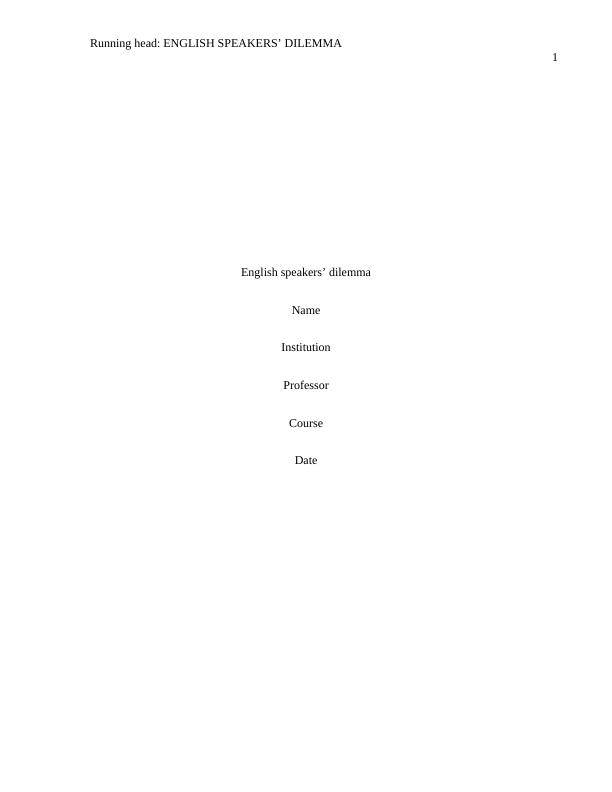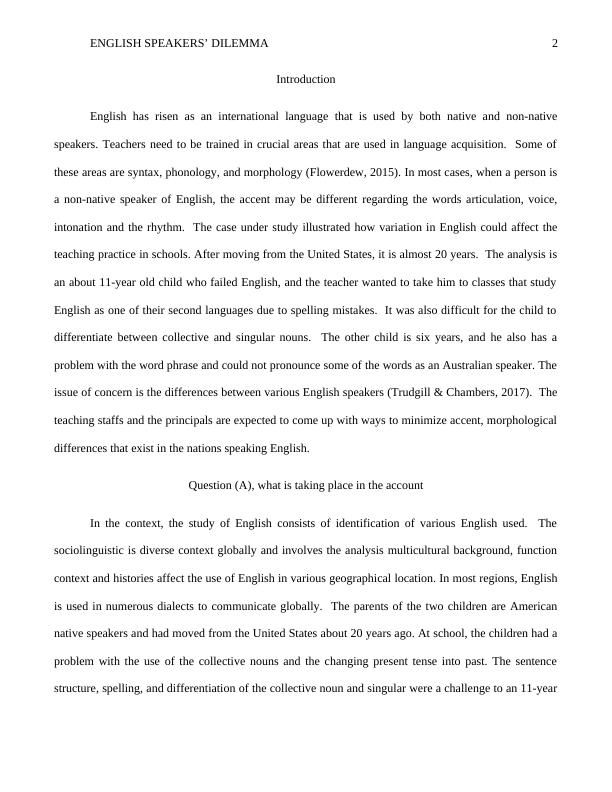English Speakers’ Dilemma: Variations in English affecting teaching practice
Assessment 3 – Final Report (40% of Total Grade) on the understanding of fundamental issues in phonetics, phonology, syntax, morphology, and related topics in linguistics, with social applications of knowledge and teaching practice, and their ability to apply this knowledge to situational/language data.
9 Pages2156 Words64 Views
Added on 2023-06-11
About This Document
This article discusses the dilemma faced by English speakers due to variations in accent, pronunciation, vocabulary, and grammar. It explores how these variations affect teaching practices in schools and suggests solutions to the problem. The article emphasizes the need for teachers to be trained in crucial areas of language acquisition such as syntax, phonology, and morphology. It also highlights the importance of acknowledging cultural diversity and creating awareness of the different accents of people. The article concludes by suggesting that setting prescriptive English rules can help in maintaining standards during education in spite of local variations.
English Speakers’ Dilemma: Variations in English affecting teaching practice
Assessment 3 – Final Report (40% of Total Grade) on the understanding of fundamental issues in phonetics, phonology, syntax, morphology, and related topics in linguistics, with social applications of knowledge and teaching practice, and their ability to apply this knowledge to situational/language data.
Added on 2023-06-11
ShareRelated Documents
End of preview
Want to access all the pages? Upload your documents or become a member.
Development of Signed English
|4
|559
|393
English Grammar and Usage
|7
|1696
|70
Learning English in Pakistan and Australia: A Comparative Analysis
|14
|4298
|319
Speaking in Tongues - Worksheet Questions
|4
|1129
|203
Observation Report on Student with Special Needs
|8
|2156
|89



